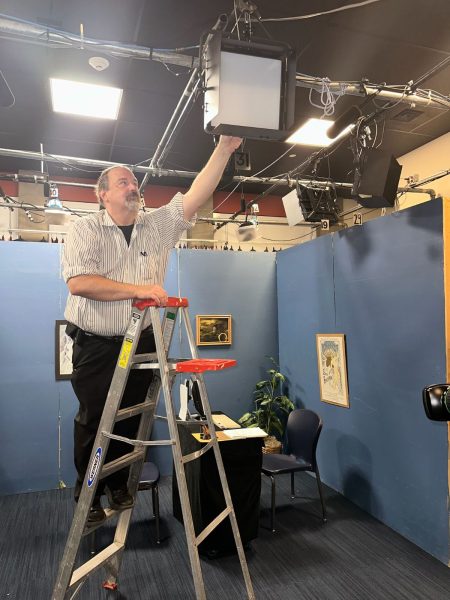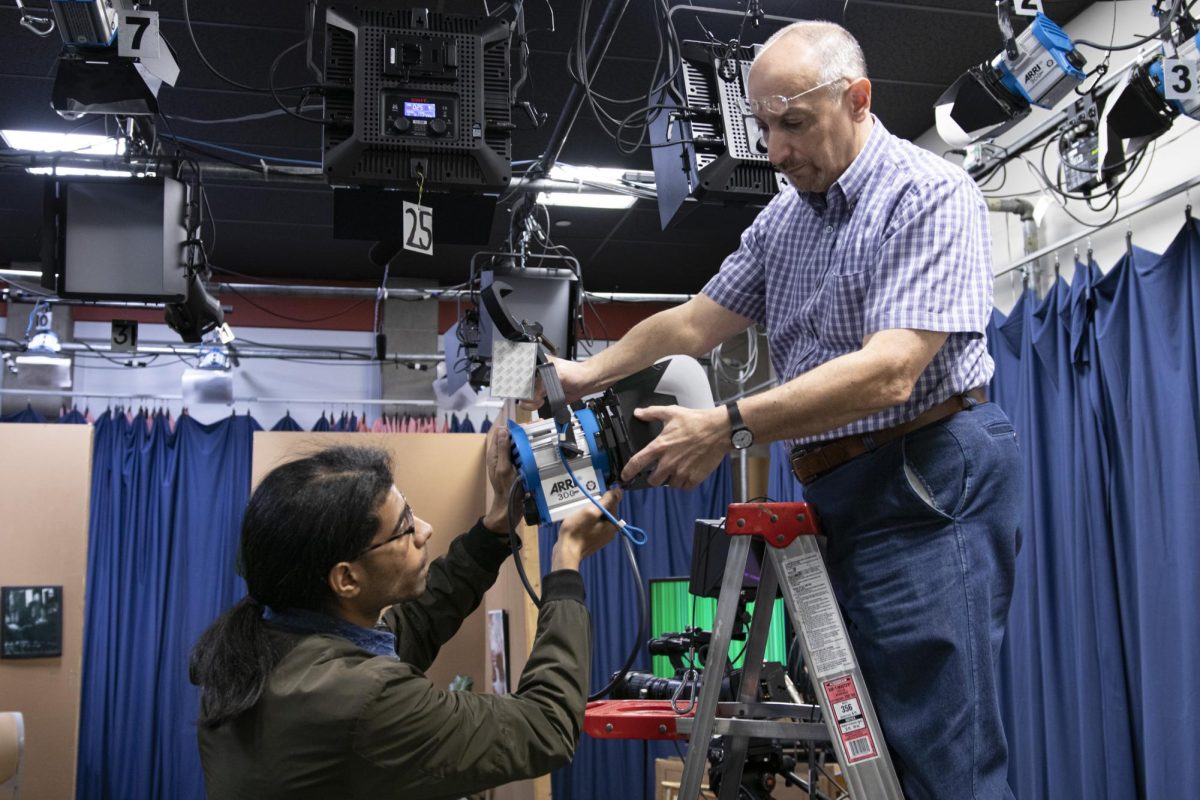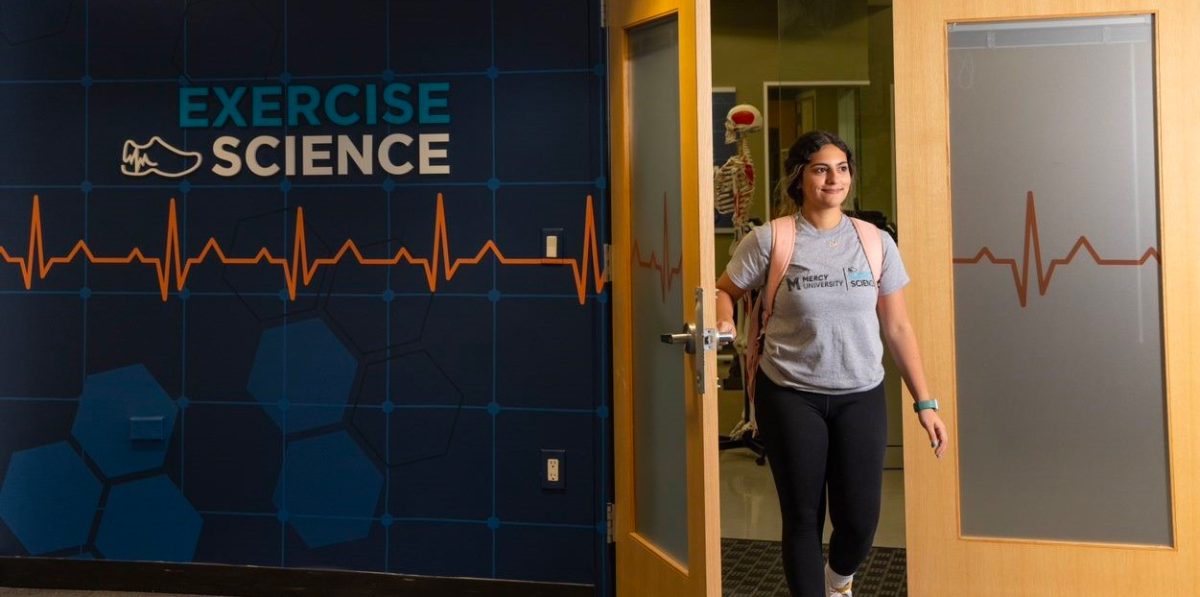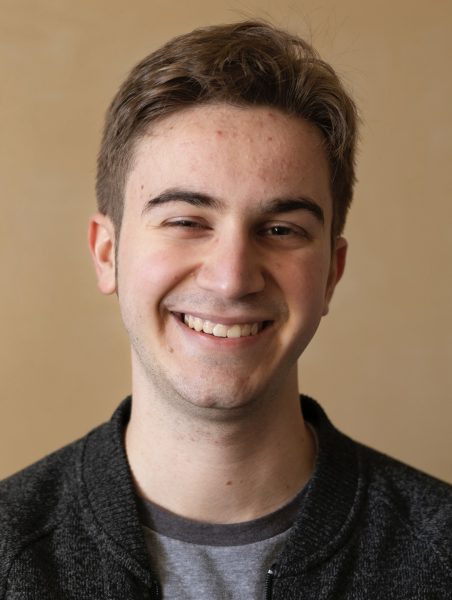It’s lights, camera, and action at Mercy University’s Television Studio in Dobbs Ferry as the Media Studies program upgraded its lighting equipment this past summer.
With industry standards rising and technological advances rapidly improving, Program Director Louis J. Grasso has been adamant about researching and adopting the best lighting setup for Mercy’s television studio for several years.
“I’ve wanted to do this for over ten years,” Grasso said. “We were working with tungsten lamps—high-voltage technology—and though effective, students in the field were working with LED technology.”
The directive for Grasso was to find 16 LED lamps to replace the halogen bulbs inside the current ARRI 300 light fixtures—which serve as the studio’s key lights—and purchase brand new LED panels to function as fill lights, all while staying within the program’s budget.
“It was just a matter of waiting for a reasonable price point, product flexibility, and availability,” he said. “At the time, it was way too expensive, and there wasn’t anything suitable for our 35×35 foot studio.”
The other directive was to find lamps that would reduce heat, as gloves were necessary while adjusting the fixtures.
“We were using nearly 6600 watts of electricity,” Grasso stated. “That can be dangerous with a dozen people working in there.”
The search was over in 2022. Grasso had found two reputable companies that satisfied the television studio’s needs. Visionsmith sold their ReLamp system, which would replace the ARRI 300s’ tungsten lamps with LED lamps. Swit provided miniature LED broad light panels, which would replace the studio’s high-voltage Scoop light fixtures used as fill lights. The new setup also required a new dimmer board using DMX communication between the lighting fixtures and lighting dimmer board—instead of the current NSI communication configuration—and new cabling.
“I can’t overstate the importance of Visionsmith coming out with the ReLamp kits,” Grasso emphasized. “The tungsten lamps were using up to 300 watts of electricity. That’s why they’re called ‘ARRI 300.’ Now, I’m using 50-watt fixtures in there.”
Grasso purchased the Swit panels during the 2022-23 school year and finished buying the Visionsmith ReLamp kits by the end of this past school year. The total cost, including the dimmer board, distribution system, and cabling, was $10,286.40.
“I also got a donation of around six LED lights from some friend of mine who got the lights donated to him from MLB.com,” he continued. “I needed three of those very desperately to light on the other side of the studio.”
One of Grasso’s student workers, Justin Abraham, 27, described when Grasso confronted him about the renovation in late April.
“He told me he was trying to replace the tungsten lights with LEDs and initially showed me how to unscrew the light and the specific process of installing those lights,” Abraham said.
The student and professor installed the LED replacement lamps inside each of the ARRI 300 fixtures in one sitting. They climbed up the studio’s ladder to detach the fixtures’ clamps off the metal batten, bring the light to floor level to unscrew the fixtures’ frames, replace and install the new lamps, and reattach them back on the batten.
Sometimes, it took more tinkering for Abraham to slide in the ReLamp unit to align the light beams correctly.
“I’ve never done something that technical before in terms of studio setup and production,” Abraham said.
Radio and television production Prof. John Micewicz helped Grasso install the nine LED broad light panels and new dimmer board soon afterward. It took them about four sittings to complete due to the new DMX configuration and wiring the lights using a daisy chain connection—connecting multiple lights to the same communication circuit via the lights’ input and output channels.

“John had to program each of the lights using different cabling,” Grasso said. “I neatened the wiring across the batten on the ceiling so it didn’t look like spaghetti. The other idea was to run cables from the dimmer board to each light. I didn’t want that. It would have looked messy and intimidated the students—another reason I waited for a newer system.”
The benefits of the new equipment after installation were immediate. The wattage output of the studio was 1080 watts with minimal heat output.
“This is a real game changer,” Grasso said. “I can’t stress that enough.”
Grasso plans to use the new lighting equipment in a multi-setup configuration. The upgraded equipment allows him to have two lighting setups positioned simultaneously at any given time—one for his fundamentals and advanced television courses. Now, he doesn’t have to continuously tear down sets to work on something else.
“I have lights in both directions in the studio,” he said. “I have the capability. It’s coming.”
Grasso plans to utilize the new features in the Spring 2025 semester. The miniature broad light panels also have the functionality of changing color temperature—something he’s passionate about—allowing students to experiment with mood and tone.
Students will also be able to adjust and position the lights in the studio for their productions safely on their own.
“Everything the program does and gives and works to get is all for the students,” Abraham said. “Grasso cares about the quality of the work that he wants the students to put out, and the lights are an example of that. The students don’t know what’s going on behind the scenes, and I want them to know more about this stuff. Mercy is a great spot, and incoming students will have a lot of good, creative people with whom they’ll be surrounding themselves. It’s a great vibe.”
“We always strive for perfection,” Grasso said.
For more information on the Media Production program at Mercy University—formerly Radio and Television Production—contact Professor Grasso at [email protected].










